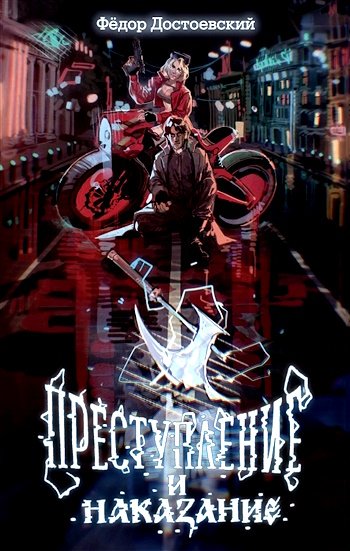Lisa lived with Jobs and Powell for all four of her years at Palo Alto High School, and she began using the name Lisa Brennan-Jobs. He tried to be a good father, but there were times when he was cold and distant. When Lisa felt she had to escape, she would seek refuge with a friendly family who lived nearby.
Steve Jobs by Walter Isaacson 368
Powell tried to be supportive, and she was the one who attended most of Lisa’s school events.
By the time Lisa was a senior, she seemed to be flourishing. She joined the school newspaper, The Campanile, and became the coeditor. Together with her classmate Ben Hewlett, grandson of the man who gave her father his first job, she exposed secret raises that the school board had given to administrators. When it came time to go to college, she knew she wanted to go east. She applied to Harvard—forging her father’s signature on the application because he was out of town—and was accepted for the class entering in 1996.
At Harvard Lisa worked on the college newspaper, The Crimson, and then the literary magazine, The Advocate. After breaking up with her boyfriend, she took a year abroad at King’s College, London. Her relationship with her father remained tumultuous throughout her college years. When she would come home, fights over small things—what was being served for dinner, whether she was paying enough attention to her half-siblings—would blow up, and they would not speak to each other for weeks and sometimes months.
The arguments occasionally got so bad that Jobs would stop supporting her, and she would borrow money from Andy Hertzfeld or others. Hertzfeld at one point lent Lisa $20,000 when she thought that her father was not going to pay her tuition. “He was mad at me for making the loan,” Hertzfeld recalled, “but he called early the next morning and had his accountant wire me the money.”
Jobs did not go to Lisa’s Harvard graduation in 2000.
He said, “She didn’t even invite me.”
There were, however, some nice times during those years, including one summer when Lisa came back home and performed at a benefit concert for the Electronic Frontier Foundation, an advocacy group that supports access to technology. The concert took place
Steve Jobs by Walter Isaacson 369
at the Fillmore Auditorium in San Francisco, which had been made famous by the Grateful Dead, Jefferson Airplane, and Jimi Hendrix. She sang Tracy Chapman’s anthem “Talkin’ bout a Revolution” (“Poor people are gonna rise up / And get their share”) as her father stood in the back cradling his one-year-old daughter, Erin.
Jobs’s ups and downs with Lisa continued after she moved to Manhattan as a freelance writer. Their problems were exacerbated because of Jobs’s frustrations with Chrisann. He had bought a $700,000
house for Chrisann to use and put it in Lisa’s name, but Chrisann convinced her to sign it over and then sold it, using the money to travel with a spiritual advisor and to live in Paris. Once the money ran out, she returned to San Francisco and became an artist creating “light paintings” and Buddhist mandalas. “I am a ‘Connector’
and a visionary contributor to the future of evolving humanity and the ascended Earth,” she said on her website (which Hertzfeld maintained for her). “I experience the forms, color, and sound frequencies of sacred vibration as I create and live with the paintings.”
When Chrisann needed money for a bad sinus infection and dental problem, Jobs refused to give it to her, causing Lisa again to not speak to him for a few years.
And thus the pattern would continue.
Mona Simpson used all of this, plus her imagination, as a springboard for her third novel, A Regular Guy, published in 1996. The book’s title character is based on Jobs, and to some extent it adheres to reality: It depicts Jobs’s quiet generosity to, and purchase of a special car for, a brilliant friend who had degenerative bone disease, and it accurately describes many unflattering aspects of his relationship with Lisa, including his original denial of paternity. But other parts are purely fiction; Chrisann had taught Lisa at a very early age how to drive, for example, but the
Steve Jobs by Walter Isaacson 370
book’s scene of “Jane” driving a truck across the mountains alone at age five to find her father of course never happened. In addition, there are little details in the novel that, in journalist parlance, are too good to check, such as the head-snapping description of the character based on Jobs in the very first sentence: “He was a man too busy to flush toilets.”
On the surface, the novel’s fictional portrayal of Jobs seems harsh. Simpson describes her main character as unable “to see any need to pander to the wishes or whims of other people.” His hygiene is also as dubious as that of the real Jobs. “He didn’t believe in deodorant and often professed that with a proper diet and the peppermint castile soap, you would neither perspire nor smell.” But the novel is lyrical and intricate on many levels, and by the end there is a fuller picture of a man who loses control of the great company he had founded and learns to appreciate the daughter he had abandoned. The final scene is of him dancing with his daughter.
Jobs later said that he never read the novel. “I heard it was about me,” he told me, “and if it was about me, I would have gotten really pissed off, and I didn’t want to get pissed at my sister, so I didn’t read it.”
However, he told the New York Times a few months after the book appeared that he had read it and saw the reflections of himself in the main character. “About 25%
of it is totally me, right down to the mannerisms,” he told the reporter, Steve Lohr. “And I’m certainly not telling you which 25%.” His wife said that, in fact, Jobs glanced at the book and asked her to read it for him to see what he should make of it.
Simpson sent the manuscript to Lisa before it was published, but at first she didn’t read more than the opening. “In the first few pages, I was confronted with my family, my anecdotes, my things, my thoughts,
Steve Jobs by Walter Isaacson 371
myself in the character Jane,” she noted. “And sandwiched between the truths was invention—lies to me, made more evident because of their dangerous proximity to the truth.” Lisa was wounded, and she wrote a piece for the Harvard Advocate explaining why.
Her first draft was very bitter, then she toned it down a bit before she published it. She felt violated by Simpson’s friendship. “I didn’t know, for those six years, that Mona was collecting,” she wrote. “I didn’t know that as I sought her consolations and took her advice, she, too, was taking.” Eventually Lisa reconciled with Simpson. They went out to a coffee shop to discuss the book, and Lisa told her that she hadn’t been able to finish it. Simpson told her she would like the ending.
Over the years Lisa had an on-and-off relationship with Simpson, but it would be closer in some ways than the one she had with her father.
Children
When Powell gave birth in 1991, a few months after her wedding to Jobs, their child was known for two weeks as “baby boy Jobs,” because settling on a name was proving only slightly less difficult than choosing a washing machine. Finally, they named him Reed Paul Jobs. His middle name was that of Jobs’s father, and his first name (both Jobs and Powell insist) was chosen because it sounded good rather than because it was the name of Jobs’s college.
Reed turned out to be like his father in many ways: incisive and smart, with intense eyes and a mesmerizing charm. But unlike his father, he had sweet manners and a self-effacing grace. He was creative—
as a kid he liked to dress in costume and stay in character—and also a great student, interested in science. He could replicate his father’s stare, but he was demonstrably affectionate and seemed not to have an ounce of cruelty in his nature.
Steve Jobs by Walter Isaacson 372
Erin Siena Jobs was born in 1995. She was a little quieter and sometimes suffered from not getting much of her father’s attention. She picked up her father’s interest in design and architecture, but she also learned to keep a bit of an emotional distance, so as not to be hurt by his detachment.
The youngest child, Eve, was born in 1998, and she turned into a strong-willed, funny firecracker who, neither needy nor intimidated, knew how to handle her father, negotiate with him (and sometimes win), and even make fun of him. Her father joked that she’s the one who will run Apple someday, if she doesn’t become president of the United States.
Jobs developed a strong relationship with Reed, but with his daughters he was more distant. As he would with others, he would occasionally focus on them, but just as often would completely ignore them when he had other things on his mind. “He focuses on his work, and at times he has not been there for the girls,” Powell said. At one point Jobs marveled to his wife at how well their kids were turning out, “especially since we’re not always there for them.” This amused, and slightly annoyed, Powell, because she had given up her career when Reed turned two and she decided she wanted to have more children.
In 1995 Oracle’s CEO Larry Ellison threw a fortieth-birthday party for Jobs filled with tech stars and moguls. Ellison had become a close friend, and he would often take the Jobs family out on one of his many luxurious yachts. Reed started referring to him as “our rich friend,” which was amusing evidence of how his father refrained from ostentatious displays of wealth.
The lesson Jobs learned from his Buddhist days was that material possessions often cluttered life rather than enriched it. “Every other CEO I know has a security detail,” he said. “They’ve even got them at their homes.
Steve Jobs by Walter Isaacson 373
It’s a nutso way to live. We just decided that’s not how we wanted to raise our kids.”

























